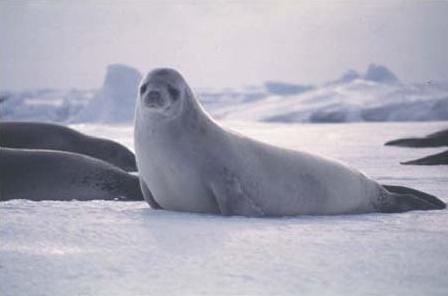
Antarctic Circumpolar Current: the movement of shallow-to-deep Southern Ocean waters from west to east around the globe, circumnavigating Antarctica, in response to the rotation of the Earth and planetary winds. The current was first reported by James Cook in 1775. (See also panel in Currents of change, this issue.)
Coccolithophore: microscopic single-celled marine algae (phytoplankton) which secrete carbonate plates known as coccoliths.
Conveyor belt: term used to describe the cycling and recycling of water through the world’s oceans.
Deep water: dense (cold, salty) ocean water that sinks in polar regions and flows around the ocean floor.
Deep Western Boundary Current: a thermohaline current, steered by the Coriolis effect, which flows along the western margin of an ocean basin.
Dimethylsulfide (DMS): the breakdown product of a chemical released from some marine plankton. DMS reacts to form cloud condensation nuclei (CNN). CNN affect the appearance and radiative properties of clouds, and also the lifetime and amount of cloud. See Water & Atmosphere 4(3): 9–12.
El Niño–Southern Oscillation (ENSO): A large-scale oscillation of the ocean-atmosphere system which alters the atmospheric heat balance and changes wind patterns mainly over the Pacific Ocean. For more details see panel in New Zealand in a warming world, this issue.
Foraminifera: single-celled marine animals (protozoa) which usually secrete a carbonate shell.
Glacial: the cold part of a fixed cycle of warm and cool periods during a major ice age. The cycle is related to changing heat from the sun due to shifts in the pattern of Earth’s orbit and tilt.
Interglacial: the warm part of the ice age cycle.
Interdecadal Pacific Oscillation (IPO): a long timescale oscillation in the ocean–atmosphere system that shifts climate in the Pacific region every one to three decades. For more details see panel in New Zealand in a warming world, this issue.
Mixed layer: the top layer of the ocean which is fairly well-mixed, i.e., temperature and salinity are uniform due to mixing by the winds and surface cooling.
Primary production: the conversion of solar energy into chemical energy via photosynthesis by marine plants in the surface waters of the ocean. During photosynthesis dissolved forms of carbon in the water are taken up by marine algae and converted to organic material.
Stratified: arranged in layers where lighter water overlies denser water, especially near the sea surface (see Water & Atmosphere 8(1): 26-27). Stratification generally occurs as surface waters warm in summer–spring, and is broken down by mixing processes, such as strong winds and surface cooling, especially during winter.
Subantarctic water: a south-west Pacific Ocean surface water mass, with relatively low salt concentrations, cold temperatures, high concentrations of nutrients; located between the Subtropical and Subantarctic Fronts. Production in these waters is iron-limited.
Subtropical water: a south-west Pacific Ocean surface water mass, with relatively high salt content concentrations, warm temperatures, low concentrations of nutrients; located north of the Subtropical Front.
Thermocline: a depth at which the temperature gradient (cooling with water depth) is at a maximum.
Thermohaline circulation/currents: (thermo = heat; haline = salt) the part of the Earth’s ocean circulation system that is driven by differences in density of adjacent water masses. The density differences are a result of differences in temperature and salinity.
Water mass: a body of seawater defined by its temperature and salinity characteristics, and created by surface processes at specific locations. Water masses are physically modified as they move along, depending on the rates of mixing with other water masses.
